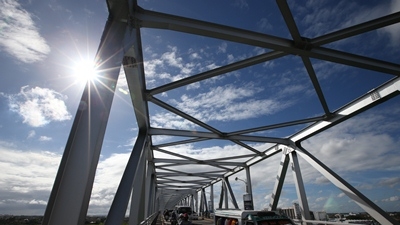Investing in the Future: Sharing Growth and Opportunities for All
Highlights:
Economic and policy developments
• After recording strong growth in the last 2 years, Philippine economic growth decelerated to 5.7 % in the first quarter of 2014 (Q1 2014). On the supply side, the services sector continued to be the main driver of growth, contributing 3.8 percentage points to overall growth, while agriculture remained weak. On the demand side, growth continued to be led by private construction, and to some extent, durable equipment, and infrastructure spending. Moreover, the recovery of net exports after 5 quarters of contraction contributed to growth. Their contribution, however, was muted by weak government consumption and the decline in private construction.
• After many years of slow poverty reduction, poverty incidence among the population declined by 3 percentage points between 2012 and 2013 to 24.9 %, lifting 2.5 million Filipinos out of poverty. For the first time in the country’s history, the government released comparable poverty estimates for 2 consecutive years instead of the usual three-year gap. Stronger job creation in the first half of 2014 (H1 2014) suggests that faster poverty reduction is expected to continue.
• The government has shifted efforts from relief to reconstruction in areas affected by Typhoon Yolanda. It has secured enough room for spending (PHP 162 billion or around 1.4 % of GDP) in the 2013 and 2014 budgets combined to support the reconstruction phase for Yolanda, the Bohol Earthquake, and other smaller disasters. Through May 2014, the Department of Budget and Management (DBM) has released PHP 32 billion, with physical works to ramp up spending in the second half of 2014.

